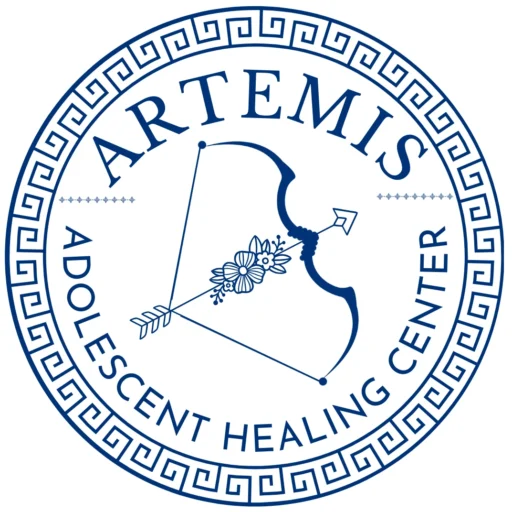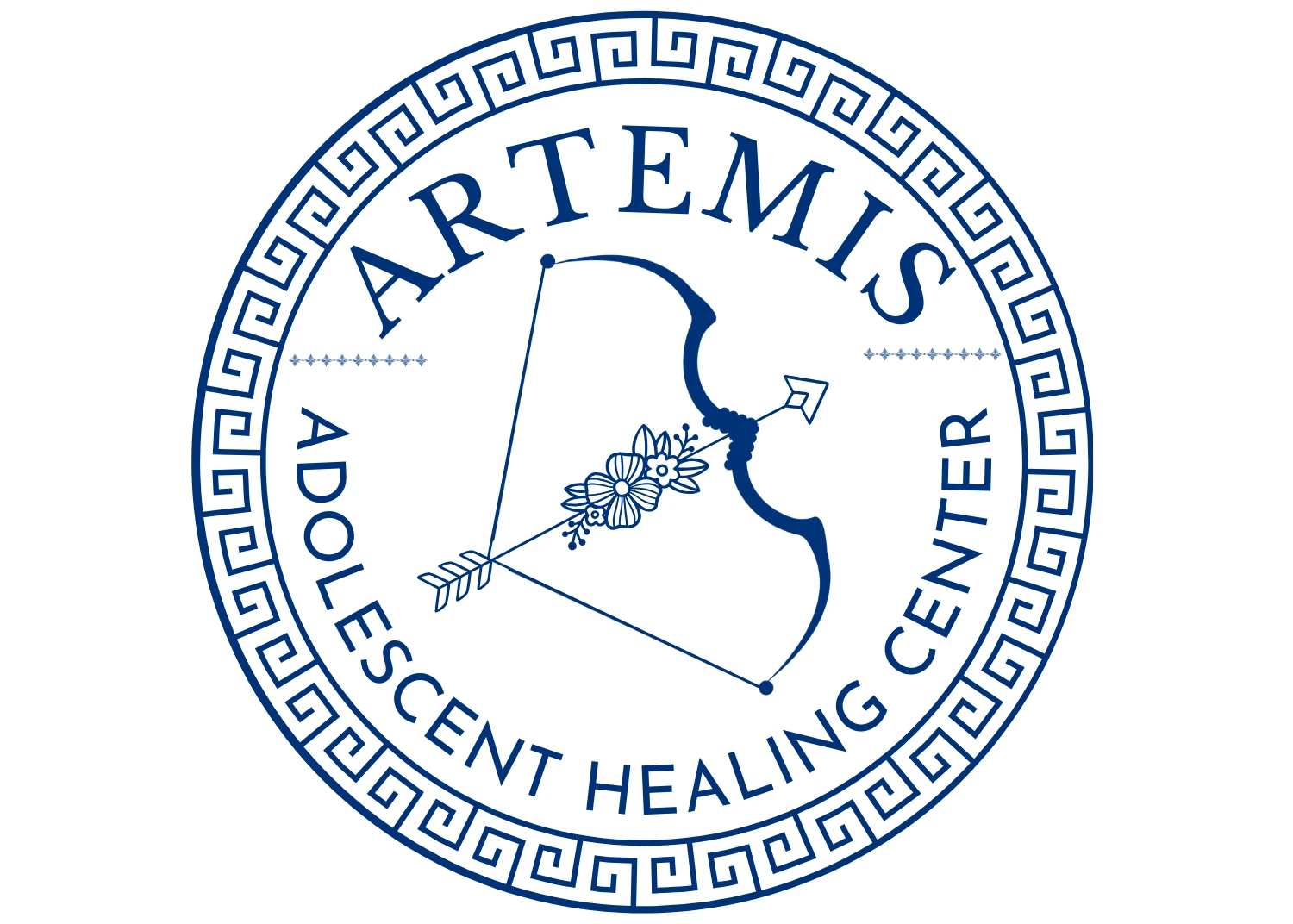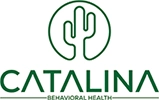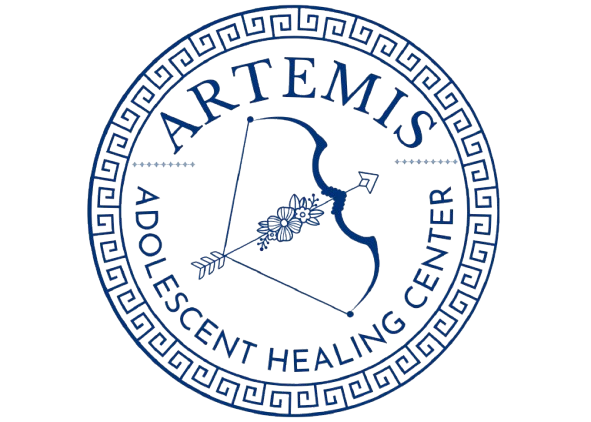Find Proven Help for Disordered Eating for Young People at Artemis
Eating disorders are mental health problems that can lead to many mental and physical complications. It can be incredibly disruptive to the development of adolescent patients. As with many mental health problems, the young person’s poor nutrition will continue to worsen without the help of medically supervised eating disorder treatment for teens.
The treatment team at Artemis Adolescent Healing Center team takes a holistic approach to adolescent eating disorder treatment. We understand the close connection between physical and mental health, especially in the context of eating disorder recovery. We also integrate with other medical care providers, ensuring that our eating disorder care programs are both safe and effective.
Please continue reading if your teenager is struggling with disordered eating. This page will help you understand the warning signs of several eating disorders and how the treatment process can restore healthy eating patterns.
Get Accredited Treatment Programs at Artemis
Eating Disorders in Children and Adolescents
The National Eating Disorders Association (NEDA) describes eating disorders as serious but treatable mental health conditions and physical health problems. They affect people of all ages, including teens. They also warn that disordered eating can start as early as age 6, especially in girls.
Binge Eating Disorder
Teenagers with binge eating disorders consume large amounts of food over a short period. During a “binge,” they feel a lack of control over their eating behaviors. They may be hungry – but usually not – and binge in secret.
Binge Eating Disorder Behaviors and Symptoms
- Eating large volumes of food quickly
- Hiding food
- Being secretive about food binges
- Eating large amounts, even when not hungry
- Feeling out of control while eating
- Having a feeling of guilt or shame afterward
- Visible and frequent weight fluctuations (lose weight, then regain it)
It’s imperative to get help from a mental health professional with experience in addressing eating disorders in teens. These behaviors often become co-occurring disorders with substance abuse or obesity, which can lead to physical health problems.
EXAMPLE: ‘Enrique,’ 16, began struggling with binge eating disorder his sophomore year. He felt overwhelmed by his busy schedule of school, sports, and pressure about dating. He started binging in secret, consuming huge amounts of salty snacks after his younger siblings went to their rooms to sleep. He’d later feel ashamed of himself, especially when his weight started fluctuating.
Enrique’s parents noticed how he’d become withdrawn and moody; he admitted his problem. The family found they help Enrique needed from Artemis, a nearby mental health treatment facility that specialized in adolescent eating disorders. Enrique’s mental health professional provided him with cognitive behavioral therapy and offered family support.
Over time, Enrique learned to deal with his emotional triggers of binge eating. He regained his self-confidence and is maintaining a healthy weight – and has a better relationship with food.
Anorexia Nervosa
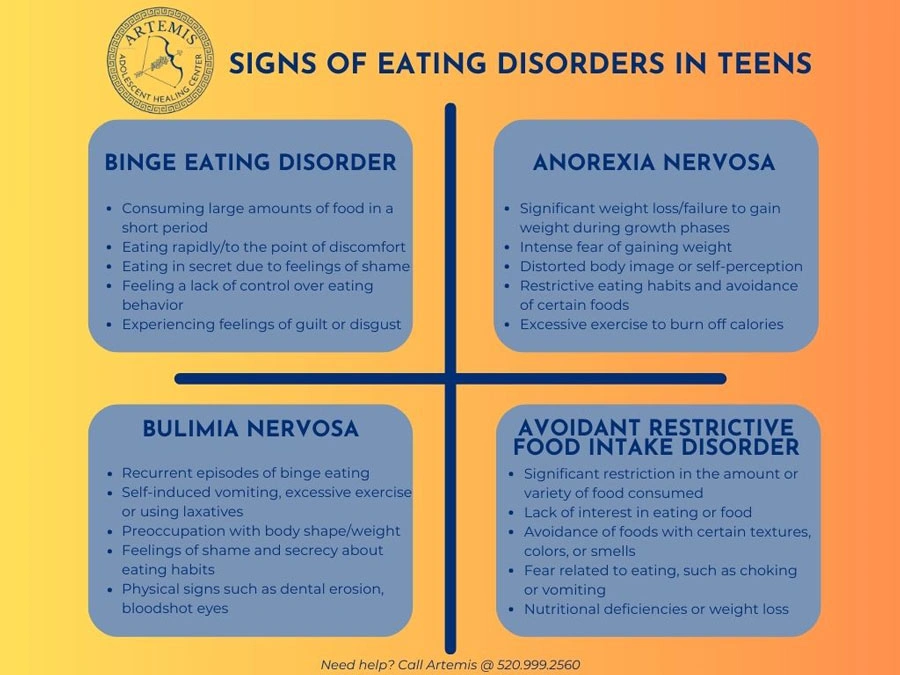
Mental health experts describe anorexia nervosa as an intense fear of gaining weight and a distorted body image. This combination leads to a severe restriction of food intake, sometimes alongside excessive exercise.
Young women are more likely than young men to develop this condition, according to the Alliance for Eating Disorders.
Anorexia Nervosa Signs and Symptoms
- Extreme amounts of weight loss; severely underweight
- Fear of gaining weight
- Skipping family meals
- Seeing oneself as overweight, even though they have a low body weight
- Restricting food intake or calories
- Avoiding certain food groups
- Exercising to exhaustion
- Withdrawal from friends
- Dizziness
- Irregular menstrual cycles
It’s important to understand that 70% of people with anorexia also experience depression. The adolescent psychiatry team at Artemis will look for this co-morbidity during the initial assessment and create a custom treatment plan accordingly.
EXAMPLE: ‘Kayla,’ 15, was a freshman in high school when she first had signs of anorexia nervosa. That was when she became highly focused on weight loss for an upcoming dance competition. Her restrictive eating and exercise program helped her lose weight – which her dance troupe manager applauded. Despite her dangerous weight, Kayla began to associate thinness as a positive thing and continued to waste away.
Kayla’s mother had been growing increasingly concerned with every pound her daughter lost. She intervened when she finally realized that Kayla’s gaunt frame and irregular eating had become a serious matter. With her group health insurance covering eating disorder treatment for teens at Artemis, she found help for Kayla. Kayla’s treatment providers created a custom program that addressed her underlying mental health issues and helped her rebuild her physical health. Kayla remains on the pathway to recovery and has replaced her love for dancing with a new hobby – weight lifting to look healthy, not thin.
Bulimia Nervosa
Young people with bulimia nervosa have cycles of binge eating followed by behaviors they believe offset the high food intake or purges. These behaviors can include self-induced vomiting, laxative abuse, or overexercising. Bulimia nervosa can be harder to spot than other eating disorder behaviors because the teen may maintain an average body weight.
Bulimia Nervosa Behaviors and Symptoms
- Binging and purging
- Feeling their eating cycles are out of control
- Preoccupation with body shape or weight
- Heading to the bathroom right after eating
- Swelling of the cheeks
- Irregular or no menstrual cycles
- Broken blood vessels in the eyes
- Tooth enamel erosion
It is not uncommon for bulimia and obsessive-compulsive disorder behaviors to overlap and become co-occurring disorders.
EXAMPLE: ‘Deneen,’ 17, a high school senior, was struggling with bulimia nervosa. She secretly binge ate and purged almost every day, usually hitting the gym and riding the stationary bike for miles after each episode. Deneen hid her unrealistic body image from her friends and family. Because she was an average size, nobody really seemed to notice (much to her relief!).
Deneen’s mother noticed that she’d not purchased feminine products for several months, and suspected her daughter was pregnant. After an argument with her mother about a possible pregnancy, Deneen finally admitted that she’d not had a period because of her eating habits. Deneen’s mother sent her to Artemis, where she worked on developing more realistic expectations and improving her relationship with food.
She also learned better coping tools to help manage her feelings of low self-worth, the underlying cause of her food addiction. Deneen’s mother is pleased with the significant progress her daughter has made.
Avoidant Restrictive Food Intake Disorder

Teens who struggle with ARFID limit the amount they eat and consume a limited variety of foods. Unlike the other eating disorders we’ve covered, ARFID is unrelated to concerns about body weight or shape. Rather, they lack interest in food, have sensitivities to certain things, or experience fears about eating.
ARFID Signs and Symptoms
- Restricting the amount eaten
- Lack of interest in eating
- Avoiding certain foods due to their textures, colors, or smells
- Fear of choking or vomiting after eating
- Nutritional deficiencies
- Depending on supplements
- Avoiding food interferes with social activities
Research suggests a possible connection between ARFID and low self-esteem, especially if the person tends to be a perfectionist. Individual therapy to help boost self-esteem, along with nutrition education, can help the person break their food-related behaviors and enjoy better health.
EXAMPLE: ‘Dex,’ 14, was an eighth grader. They’d always been a picky either, but their eating habits became even more perplexing to their dad over time. Dex avoided all foods that were cream or white in color. That meant no rice, potatoes, cauliflower, milk, Greek yogurt, or oatmeal were ever on the plate. They had also started skipping invitations to friends’ homes, especially involving a meal where they had little control over what might be on the plate.
Dex’s father knew something was “off” about their eating behaviors and called Artemis for an assessment. With a diagnosis of ARFID, Dex received nutritional counseling, food education, and one-on-one therapy from a specialist in adolescent mental health. Dex worked hard to include creamy-colored foods and address his sensory issues. His dad attended eating disorder education and learned about ARFID, soon understanding Dex’s disorder. After several months of outpatient therapy, Dex made significant progress and eventually accepted an invitation to eat dinner at a buddy’s house.
Get Effective Eating Disorders Treatment Options
Younger Patients With Eating Disorders and Physical Health Problems
Besides mental health concerns, it’s important to treat eating disorders in young people because of the physical challenges they may face as they transition into adulthood:
Cardiovascular Issues
Malnutrition related to disordered eating behaviors can cause weakening in the heart. Some possible outcomes are irregular or weak heartbeats, low blood pressure, high blood pressure, and heart failure.
Dental Problems
Vomiting churns up stomach acids, which then erodes tooth enamel. Purging food by vomiting can cause cavities and gum disease, which can be painful and costly to fix.
Nutrient Deficiencies
Those who seek treatment for eating disorders have often lacked essential nutrients. Low nutritional intake can cause anemia, osteoporosis, and low immune function.
Endocrine Disorders
The endocrine glands produce hormones that impact metabolism, growth, and reproduction. Hormonal imbalances from not eating well often lead to delayed puberty, slower growth, and menstrual issues for teens.
These are just a handful of the possible physical conditions that can arise from adolescent eating disorders. Also, the longer one waits to seek treatment, the more damage that can be done to the body.
Adolescent Eating Disorder Treatment Programs at Artemis
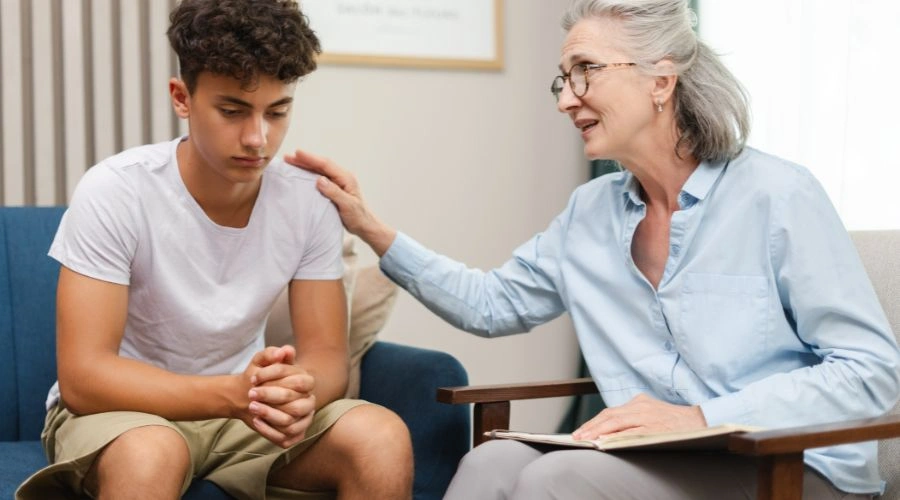
Artemis believes that teens with eating disorders need holistic, evidence-based treatment that will address their psychological and physical well-being. We work with experts in adolescent medicine to ensure complete treatment of eating disorders.
We provide each client with a specialized treatment program to suit their individual needs. Read on to learn about some of the typical program components that make our team so successful in offering support and treatment.
Initial Assessment and a Firm Diagnosis
To ensure diagnosis accuracy, we assess your adolescent before formulating an individualized treatment plan. Even if your teen already has a diagnosis, consider it a second opinion – never a bad idea. We follow the standards of the American Psychiatric Association, including checking symptoms and behaviors against those outlined in the DSM-5.
Individual Therapy Sessions (Talk Therapy)
A licensed counselor works individually with your teenager to help them understand why they have developed harmful eating patterns. After we get to the heart of their issues, we can construct additional interventions to help them continue to recover and, eventually, to proper weight restoration. Some therapies we may try are:
Enhanced Cognitive Behavioral Therapy (CBT-E)
CBT-E is a therapy that can help treat eating disorders. It addresses the triggers of eating disorders. The client may discover they overvalue a particular body shape or have started relying on food as an inappropriate coping strategy.
Dialectical Behavioral Therapy (DBT)
Dialectical behavior therapy helps clients manage their most intense emotions and learn to cope better. In people with eating disorders, it helps them learn mindfulness, distress management, and to regulate their emotions. These skills can help them end their poor relationships with food and increase emotional wellness.
Interpersonal Psychotherapy (IPT)
IPT helps those with disordered eating behaviors restore their interpersonal relationships and social skills to relieve the eating disorder symptoms. It can help address common triggers like grief, role transitions, and loneliness to restore better mental health.
Family-based Treatment
Involving the whole family is essential when an adolescent struggles with atypical eating patterns. The family therapy setting is supportive and guided by a counselor who can address family dynamics and help facilitate good communication. Family education and treatment are essential for parents or caretakers to help prevent relapse.
Therapy with Peer Groups
Working with peers who are also working on their own mental health concerns can bring great comfort to the struggling teen. Group therapy peers work with each other to role play, problem solve, and learn how to avoid food triggers.
Getting Help for Teens with Eating Disorders at Artemis

If you’re ready to help your adolescent get help with an eating disorder, the Artemis staff is here to provide them with the support they need in the form of effective eating disorder treatment for teens and adolescents.
We have successfully helped many teens break the cycle of problematic eating – and now they’re living a healthier, and more balanced life.
Call Artemis today to start recovery. Calling to speak with a team member at our treatment facility is confidential.
Up To 100% of Rehab Costs Covered By Insurance
Adolescent Eating Disorder FAQs
Concerned parents often call Artemis with questions they (and other family members concerned about the teen) have on their minds. Our FAQ section addresses some of these concerns.
How Common Are Eating Disorders in Teenagers?
The National Institute of Mental Health (NIMH) has found that about 4% of the population will develop an adolescent eating disorder between the ages of 13 and 18. With about 25 million teens counted in the last nationwide census, that equals about 1 million teenagers struggling.
What Kind of Treatment Setting Should We Expect?
Eating disorders are generally treatable in an outpatient setting – we have an option of a partial hospitalization program or an intensive outpatient program, depending on the teen’s needs. We also have residential treatment programs for those with more complicated concerns like a drug addiction or self-harming behaviors.
What Are the Risk Factors for Developing an Eating Disorder?

Some of the things that place someone at greater risk include genetic factors, a history of dieting, perfectionism, and unrealistic ideas about body image. Other factors that may contribute are a history of trauma and some personality traits.
Are There Common Co-Occurring Mental Health Disorders?
Some of the frequent mental health disorders that are co-morbid with disordered eating include substance use disorder, personality disorders, obsessive-compulsive disorder (OCD), depression, post-traumatic stress disorder (PTSD), and anxiety disorder.
Where Can I Find Community Resources Post-treatment?
Look online to find local opportunities to attend Overeaters Anonymous and SMART Recovery programs. Overeaters Anonymous (OA) is a 12-step model, similar to Alcoholics Anonymous. It’s a fellowship of people supporting each other as they follow the 12-step pathway and end food addiction. SMART is a self-help program that uses evidence-based cognitive techniques to resolve myriad harmful or self-destructive behaviors. Their members struggle with every challenge, from drug and alcohol use to obsessive-compulsive disorder to problematic eating.
Does Artemis Accept my Insurance Coverage?
We are an in-network partner with some of the top group and individual health plan providers. Besides that, we work with AHCCCS (AZ Medicaid) coverage, ensuring fair and equitable treatment for some of the most at-risk teens in the Grand Canyon State. Call our insurance coordinator to discover the particular details of your coverage. We’re glad to help and can call your insurer to verify benefits.
